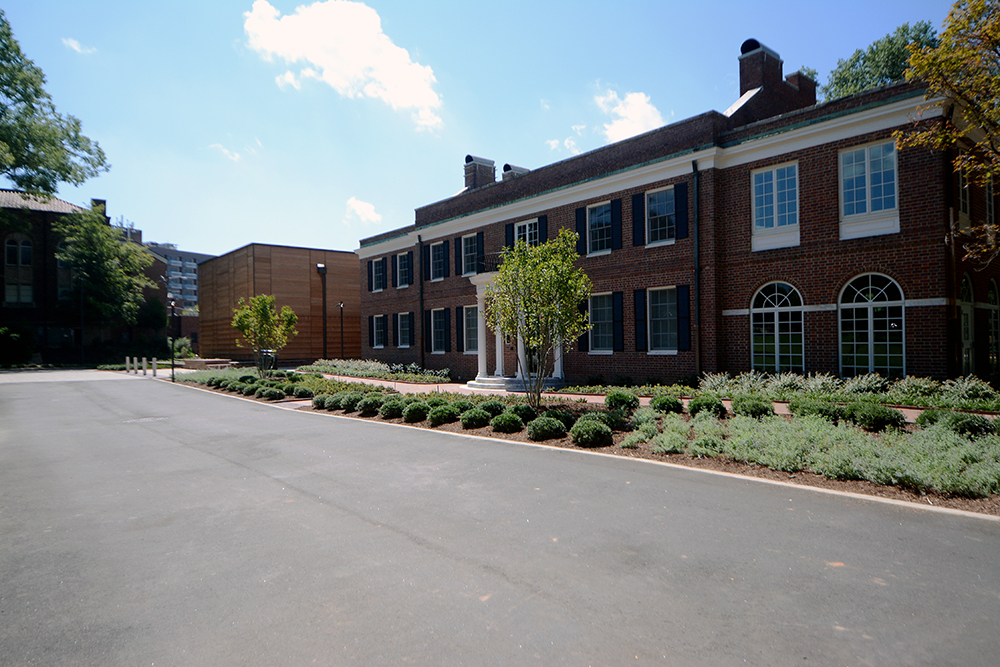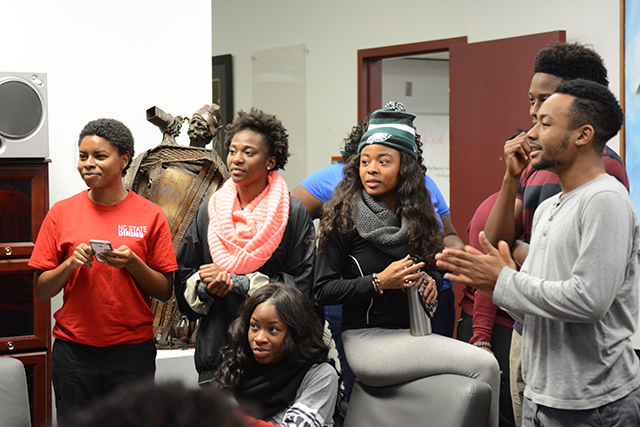Brandon Lang/Staff Photographer
The completed renovation of the old Chancellor’s residence and its new extension serve as the new freestanding site of the Gregg Museum of Art & Design. The museum features a collection of over 35,000 objects, as well as three viewing galleries that will have rotating shows throughout the year.
Carl Hintz | Correspondent
On Saturday, August 26th, the Gregg Museum of Art & Design will reopen to students and the public after two years of construction and remodeling.
The Gregg Museum, now located at 1903 Hillsborough Street, near the NC State bell tower, has more than 35,000 items in its collection, making it one of the larger museums in North Carolina.
“We exist mainly to support the curriculum of NC State,” said Roger Manley, the Gregg Museum director. According to Manley, it is relatively easy for students and researchers to arrange a time with museum staff where they can handle objects in the Gregg collection.
Zoe Starling, the curator of education for the Gregg Museum, said, “I try to work with professors on campus to have classes come visit the exhibitions and incorporate it into the curriculum as a part of their class.”
The location for the Gregg Museum was chosen based on factors including its proximity to NC State’s central campus. “I think the location, because it’s more accessible, is really exciting for us,” Starling said. “We’ve never really had our own museum where we can control the hours. Before, we were in Talley Student Center.”
From 1928 to 2011, the original building at 1903 Hillsborough Street served as the NC State chancellor’s residence. In 2011, The Freelon Group was awarded the contract to design an addition to the Historic Chancellor’s Residence in order to house the Gregg Museum. Phil Freelon, an NC State alumnus is best known for his role in designing the National Museum of African American History and Culture in Washington D.C.
On opening day, Gregg Museum visitors will be greeted by three different exhibits including a diverse sample of pieces from the Gregg collection, a number of abstract paintings by Raleigh native Herb Jackson and a collection of Native American art, objects and artifacts.
The “Show & Tell” exhibit is intended to display the diversity of the pieces in the Gregg collection. A quilt depicting a skeleton on a horse catches the eye. The piece was created by Ben Venom with input from the “Friends of the Gregg,” an organization of people who have donated to the Gregg Museum and its endowment fund. The “Show & Tell” exhibit, on display through December 30th, draws from a range of genres including folk art, outsider art, and fine art as well as a wide range of mediums such as ceramics, glass and textiles.
A collection of Jackson’s paintings is on showcase from August 26 to January 28, 2018. The exhibit “A Door Is Not A Window” displays the paintings with backlighting to create a visual effect similar to light passing through a stained glass window. The paintings use a pigment that Jackson makes with a holographic type material so the colors in the painting shift as you walk past it.
The “Treasures of Native America” exhibit is displayed until April 29, 2018 in the old chancellor’s residence. The pieces represented are from many different groups including the Navajo, Hopi, Apache and Pueblo people. The art was collected and donated by Dr. Norman Greenberg and Dr. Gilda Greenberg, who both worked for the Bureau of Indian Affairs in New Mexico.
The opening exhibits will be replaced by a display of kinetic sculpture, modernist furniture and art, and a photography collection of blues musicians, respectively.
“It’s all about keeping something new happening every few months. So that there’s many reasons to keep coming back to the Gregg,” Manley said.
The design of the building was inspired, in part, by some of the objects in the Gregg collection.
Derek Jones, who served as the project principle and oversaw the design team, said, “We settled on a metaphor of the quilts in the collection and the quilting together of galleries.”
“These galleries and the lobby itself and even the outdoor garden [are] these stitched together moments and experiences,” Jones said. Even the property itself is like different pieces of fabric in the sense that it is owned in part by NC State and in part by the city of Raleigh.
Kenneth Luker, the lead designer, said “The quilt on that back wall is probably endemic of that conceptualization, these swatches of old and new cloth or old and new spaces, so stitched together.”
The piece, which appears like a tapestry of different faces formed by curved lines, was made by Pedro De Clet who is a self taught painter who was raised in Connecticut.
The quilt on the back wall “is actually a painted carpet and it comes from the genre of outsider art,” said Mary Hauser, the Gregg Museum registrar. “Outsider [artists] are folks who had the need to make, but used whatever skill set they had available.”
In total, the project cost $9.5 million, $4 million of which came from the private donations of nearly 400 individuals. The remaining $5.5 million was acquired from NC State student fees, NC State university funds, the city of Raleigh and from Wake County via the tourism tax.
Additionally, Wells Fargo donated to fund the lighting of the Herb Jackson exhibit, and Bayer CropScience provided a grant to support the construction of the pollinator garden, which was designed by students in the department of horticultural sciences. The building is designed with several environmental features including locally sourced materials.
The Gregg Museum is free of admission and is open on Tuesday, Wednesday, Friday and Saturday 10 am – 5 pm, Thursday 10 am – 9 pm and Sunday 1 pm – 5 pm and closed on Mondays. The Gregg Museum also has many events and programs throughout the year. On September 28 at 6 pm professor Anne Spafford will give a talk called The Bees’ Needs about designing gardens for pollinators. On October 14th from 2-4 pm there will be a drum session with Miska Waya, Native American student drumming group.
Photo Gallery:
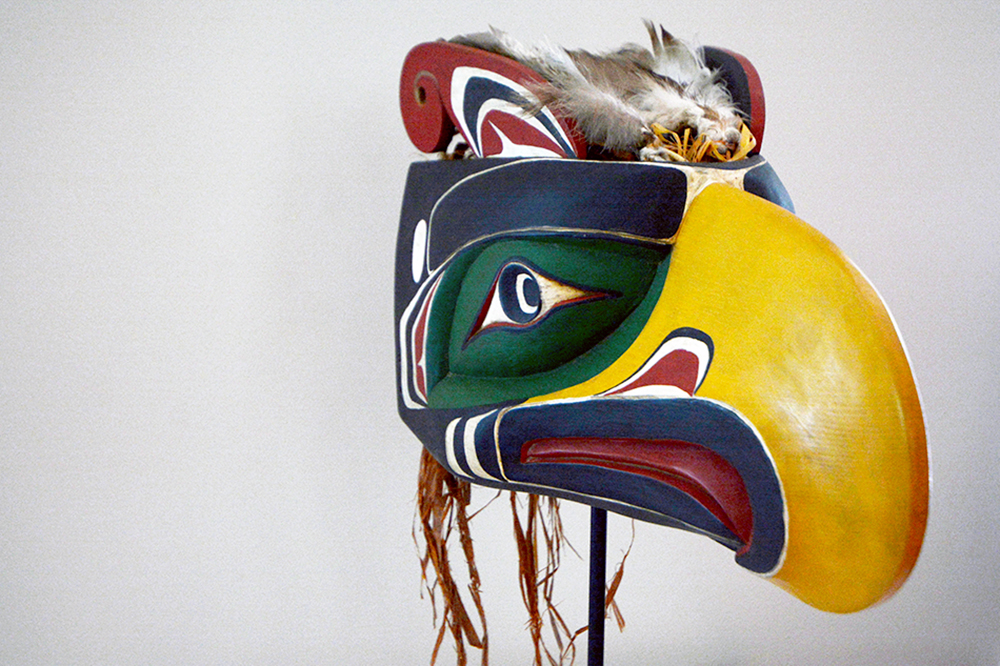
Brandon Lang/Staff Photographer
The Gregg Museum of Art & Design, now housed at the old Chancellor’s residence and its new extension on Hillsborough Street, features over 35,000 objects, including several pieces of Native American art. The museums new space has over 24,000 total square feet and has 3 gallery spaces. The Gregg is set to reopen to the public on Saturday, August 26, 2017.
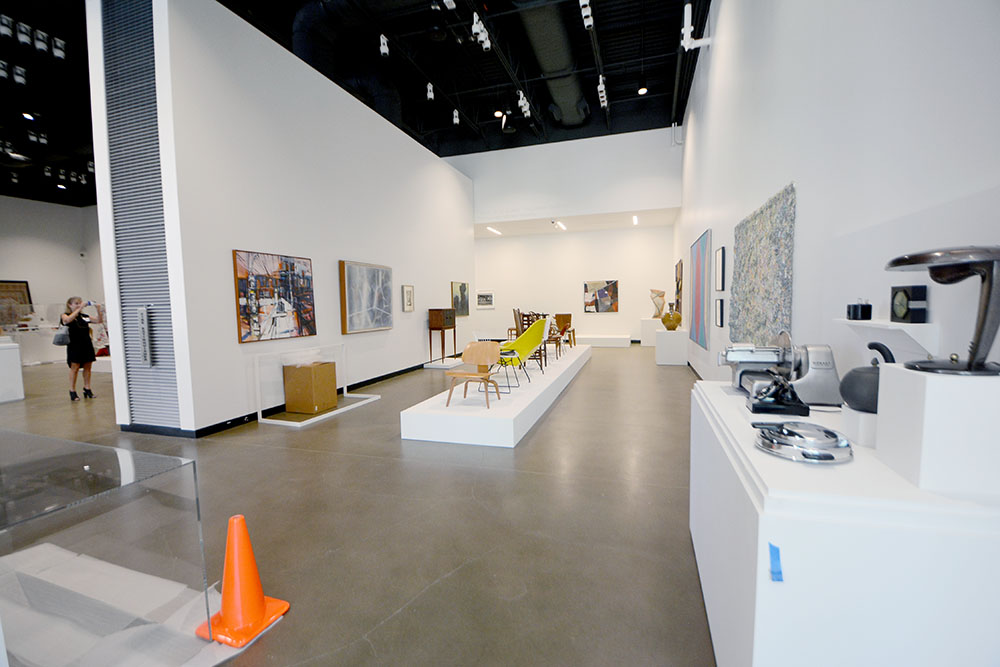
Brandon Lang/Staff Photographer
The new home for the Gregg Museum of Art & Design features three gallery spaces, one of which is shown, that have great flexibility with each space able to house temporary walls and partitions to create different spaces. Several new innovations are hosted throughout the museum, which is set to reopen Saturday, August 26, 2017.
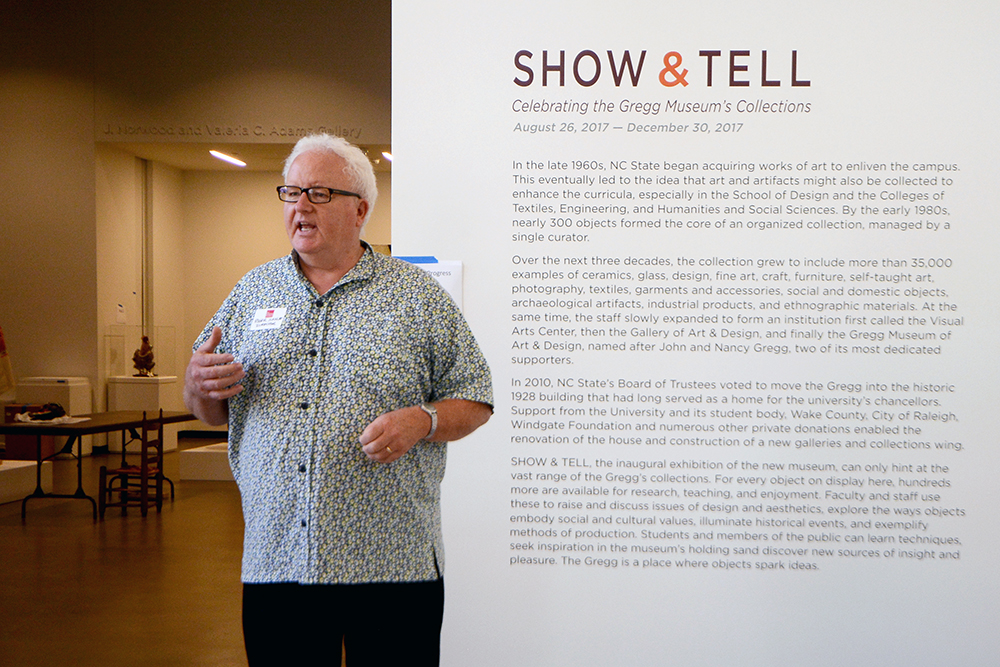
Brandon Lang/Staff Photographer
Director of the Gregg Museum, Roger Manley, speaks to members of the press about the new gallery space. The Gregg Museum of Art & Design will feature a gallery space entitled “Show & Tell,” a gallery collection that will constantly be changing every few months. The museum is reopening to the public Saturday, August 26, 2017.
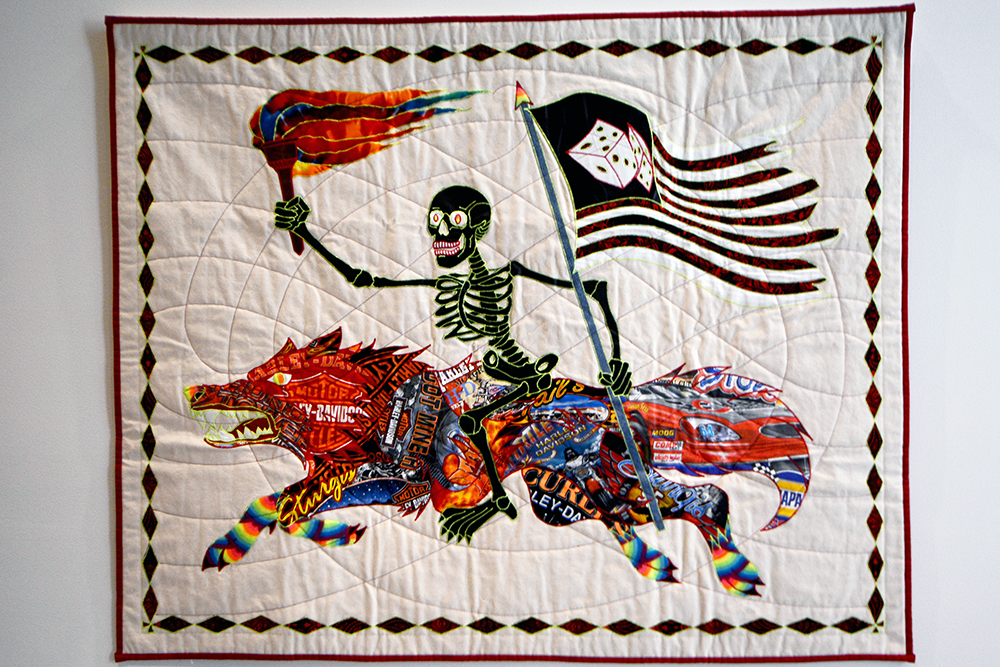
Brandon Lang/Staff Photographer
Patchwork quilts are one of many objects housed in the 35,000 piece collection of the Gregg Museum. The museum itself, formerly housed in Talley Student Union, reopens its doors at the old Chancellor’s residence on Saturday, August 26, 2017.

